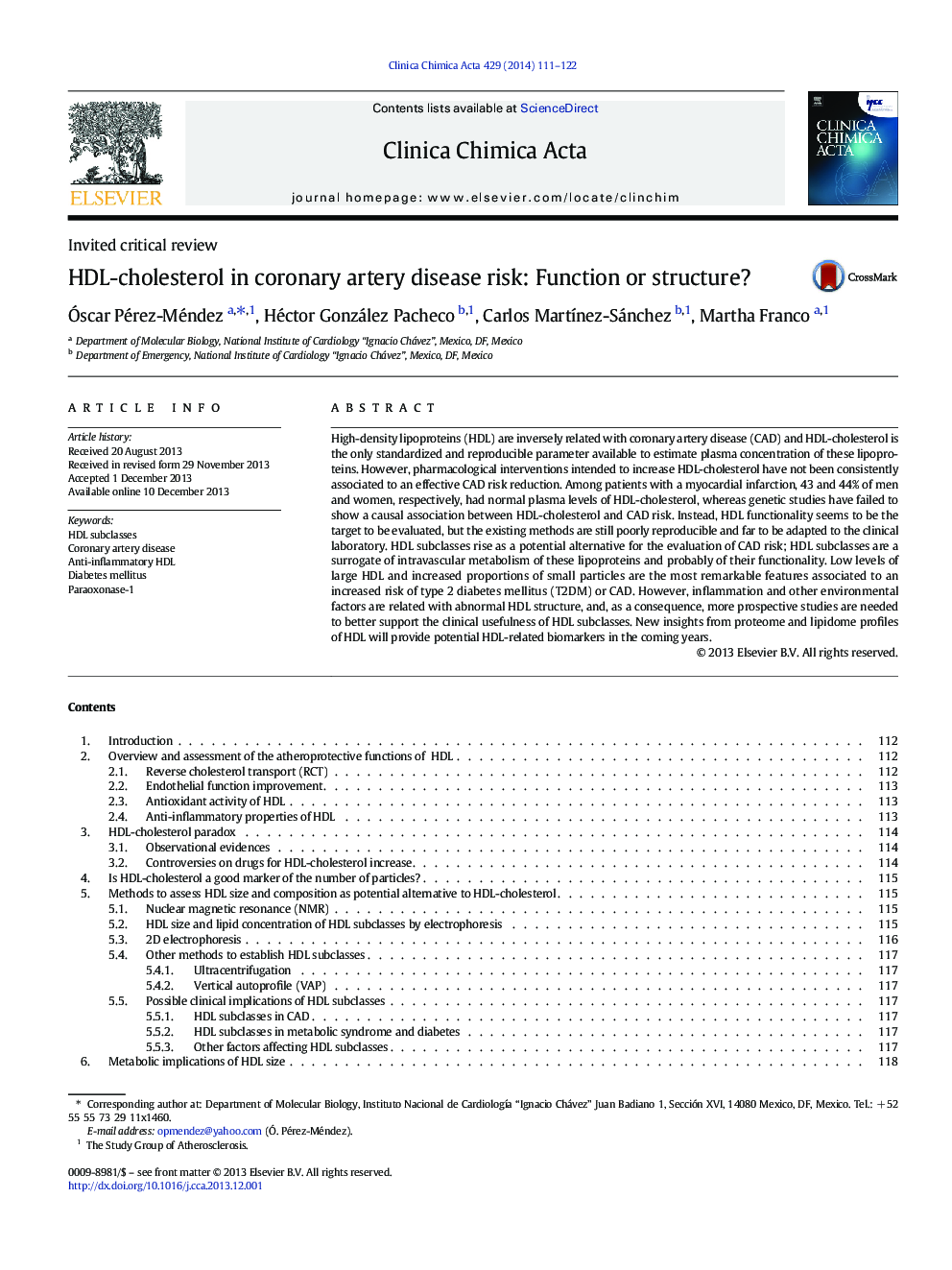| Article ID | Journal | Published Year | Pages | File Type |
|---|---|---|---|---|
| 8312243 | Clinica Chimica Acta | 2014 | 12 Pages |
Abstract
High-density lipoproteins (HDL) are inversely related with coronary artery disease (CAD) and HDL-cholesterol is the only standardized and reproducible parameter available to estimate plasma concentration of these lipoproteins. However, pharmacological interventions intended to increase HDL-cholesterol have not been consistently associated to an effective CAD risk reduction. Among patients with a myocardial infarction, 43 and 44% of men and women, respectively, had normal plasma levels of HDL-cholesterol, whereas genetic studies have failed to show a causal association between HDL-cholesterol and CAD risk. Instead, HDL functionality seems to be the target to be evaluated, but the existing methods are still poorly reproducible and far to be adapted to the clinical laboratory. HDL subclasses rise as a potential alternative for the evaluation of CAD risk; HDL subclasses are a surrogate of intravascular metabolism of these lipoproteins and probably of their functionality. Low levels of large HDL and increased proportions of small particles are the most remarkable features associated to an increased risk of type 2 diabetes mellitus (T2DM) or CAD. However, inflammation and other environmental factors are related with abnormal HDL structure, and, as a consequence, more prospective studies are needed to better support the clinical usefulness of HDL subclasses. New insights from proteome and lipidome profiles of HDL will provide potential HDL-related biomarkers in the coming years.
Related Topics
Life Sciences
Biochemistry, Genetics and Molecular Biology
Biochemistry
Authors
Ãscar Pérez-Méndez, Héctor González Pacheco, Carlos MartÃnez-Sánchez, Martha Franco,
